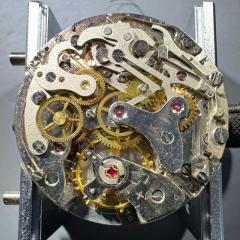Venus 170 Musings
-
Recently Browsing
- No registered users viewing this page.
-
Topics
-
Posts
-
A local machinery auction this week is liquidating some watchmaker's equipment. Actually a truly absurd amount of it, from a machine collector's estate, making me wish I had waited a couple of months to buy my lathe because there are so many options at low prices. Anyway - there are a handful of faceplates on 8mm collet mounts up for sale and I think I can probably get one. Having never had one in hand, they seem kind of large as described though - all are listed at either 4in (101mm) or 3 11/16in (93.7mm) diameter. As I understand it, WW lathes are 50mm from spindle center to bed so it seems like the 4 inch faceplates would not have enough clearance. Could I expect the 3 11/16in to fit with a WW headstock and bed? What is a typical diameter for a faceplate? Also possible the description of "4 inches" is only a rough estimate by the auction house and not actually accurate. Example the 3 11/16":
-
Buying a specific jewel for a specific movement is difficult if not impossible in most cases. cousinsuk/jewels
-
your best approach is to measure the current crystal and find a replacement at an online watch parts supply.
-
The jewels in the barrel train bridge appear to be set or rubbed in so your best option would be a new bridge. The balance jewel looks fine to me.
-
There is nothing wrong with the movement. I just posted the pictures of the rubies that I need so that I can know where to buy them as I practice repairing watches in the future.
-





Recommended Posts
Join the conversation
You can post now and register later. If you have an account, sign in now to post with your account.
Note: Your post will require moderator approval before it will be visible.